
I have just finished writing my 9-step guide (below) and now I’ve come hurrying back to the beginning because I want to make one thing clear. Never mind how the guide makes it seem – I am emphatically not a natural planner. I wrote for pleasure for years before I started writing for publication, and every single book I wrote back then was made up as I went along. I would know roughly how the story was going to end, and then I’d start writing with no real idea of how I was going to get there.
So, if you’re a pantser, don’t dismiss my guide as something you could never do, even in part. Trust me – a few years ago I would have said exactly the same…
Planner or pantser, I hope you’ll found something in here that you think will help you with your own writing. Good luck!
1. When planning a Home Front Girls book, I start by putting together the individual plots for the viewpoint characters – usually there are three – and discuss them with Jess, my editor at Bookouture. I value her input, firstly because she understands what will make the most satisfying book for the readers, and secondly because agreeing the plots in advance cuts down significantly on the editing process. Lots of writers tell me that planning the book in such detail would be impossible for them, and I always tell them that, to me, this is the structural edit!
2. I make a list of which day of the week was the first day of each month in the time-frame of the book. I also note what day of the week Valentine’s Day, Christmas Day etc took place, as well as the dates of Easter Sunday and the bank holidays. If you are going to hang your story on real events, you have to know the day and the date at all times, even if these dates aren’t specified within the narrative itself.
3. I list the important wartime events, with dates, so that the characters can talk about them and respond to them. I also list, with dates, things that happened on the home front. Changes to the rationing rules is an obvious example. I use the Radio Times website to make a note of what was on the wireless at the relevant times on particular days. (In one of my Railway Girls books, written as Maisie Thomas, I mentioned a concert organist by name, courtesy of this website, and a neighbour who reads my books came over the road to tell me, ‘His widow lives round the corner!’)
| 4. Do I need to sow the seeds of something that’s going to happen in a future book? For example, in A Wedding for the Home Front Girls, Louise discusses her ambition with Lorna. Though nothing happens about this in Wedding, it paves the way for something that is going to happen in the future. One thing I can promise you is that every single thing in my plots happens for a reason… even if the reason won’t become apparent until a couple of books down the line. | 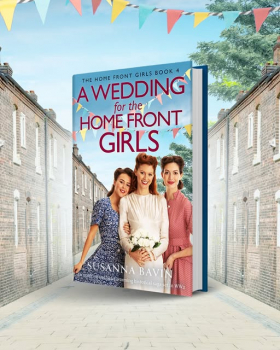 |
5. Using a separate sheet of A4 for every scene, I write down the main points of each scene for each viewpoint character, including how each scene will end. For me, it’s essential to know from the outset how each scene finishes – and I don’t just mean in general terms. I mean, will it end on a note of tension/drama, or on an important question, or will there be an emotional moment? It has to be something that will make the reader anxious to carry on reading.
6. The viewpoint characters don’t have to have the same number of scenes, but it helps if they have approximately the same. Having said that, if one character’s plot requires more pages than the plots of the others, then I’m happy to let that unfold. It isn’t an exact science! It’s a question of telling the overall story in the most compelling way.
7. Each of these sets of plot-strands needs to be checked against the dates. My books are woven around real events and the individual plots reflect this. (I once read a book part of which happened to be set in December 1861 – but clearly the author hadn’t checked whether anything of national importance had taken place at that time and consequently none of the characters mentioned the death of Prince Albert…)
h
8. Now the scenes for the viewpoint characters have to be merged together into a single sequence. I love doing this, because it’s a big step forward in creating the book. It is also time now to make notes about the links and overlaps between the various plot-lines. Female friendship and the ways in which women support one another always form a strong theme within my books, and I add ideas for ways in which this support can manifest itself.
9. Next I put the scenes into a month-by-month time-line, starting at the end of the book. Why start at the end? Because this is what everything is building up to. I know it sounds more sensible to start a time-line at the beginning, and I’m sure that’s probably what most people would feel more comfortable with, but I find it easier to start at the end and work backwards. At this point, I go through the individual scenes to add references to details of life on the home front and other real events. Many of these references are date-sensitive, but obviously there are others that aren't. These details can only be added to a scene if they fit there naturally. Yes, books take a lot of research, but it must never look like research – it must be woven seamlessly into the narrative.
So there are the 9 steps that go into my planning of each of my Home Front Girls books. After that, it’s time to start writing!
* * * *
The Home Front Girls series on Amazon
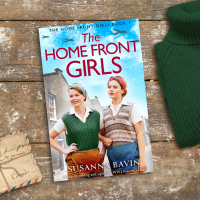 | 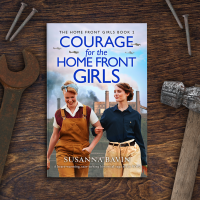 | 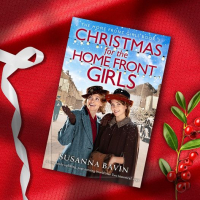 |
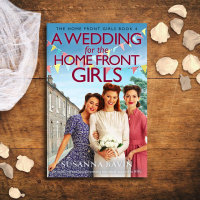 | 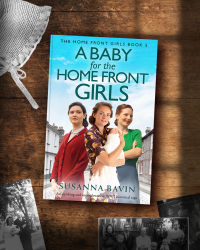 |


Make A Comment
Comments (0)